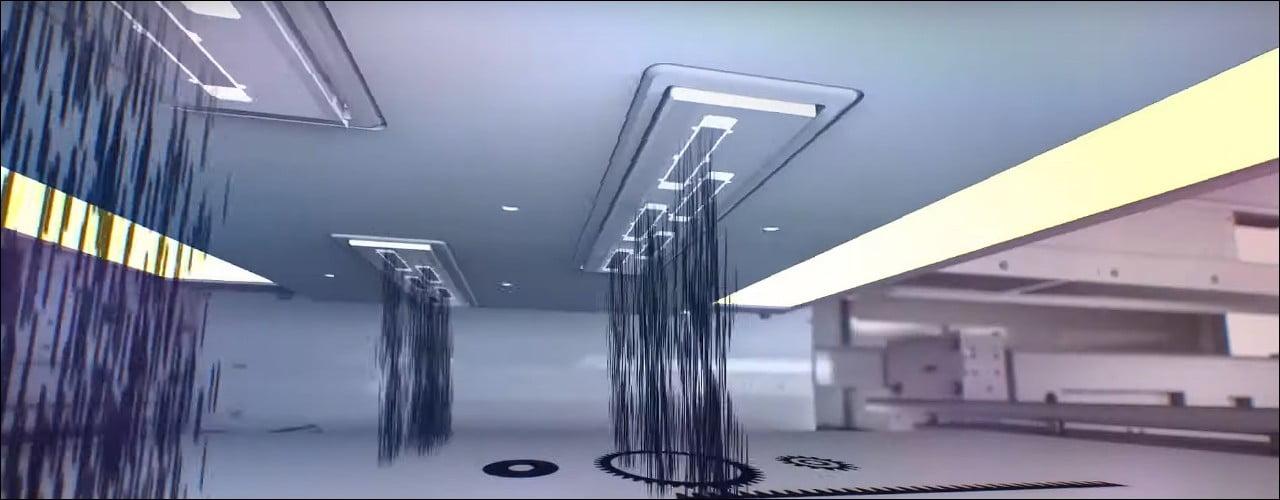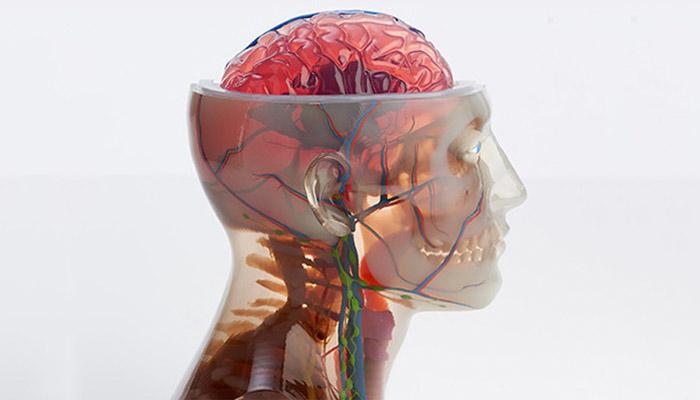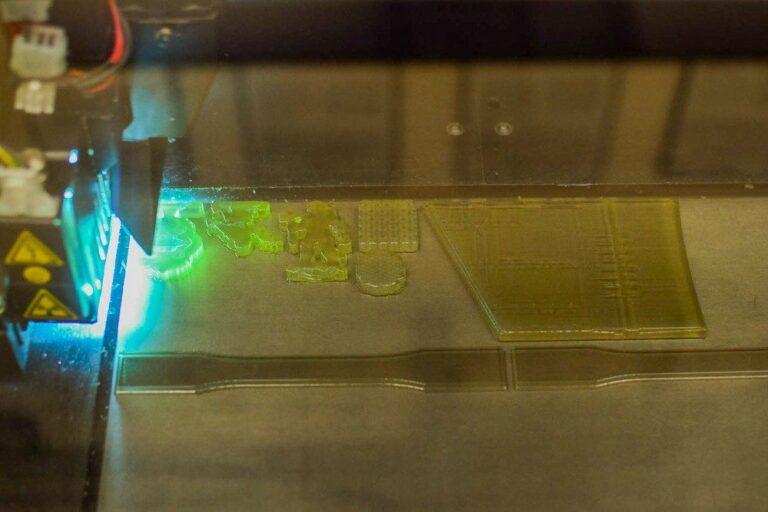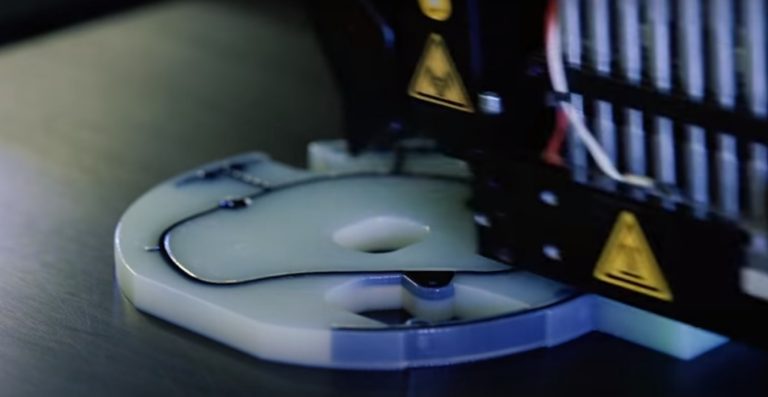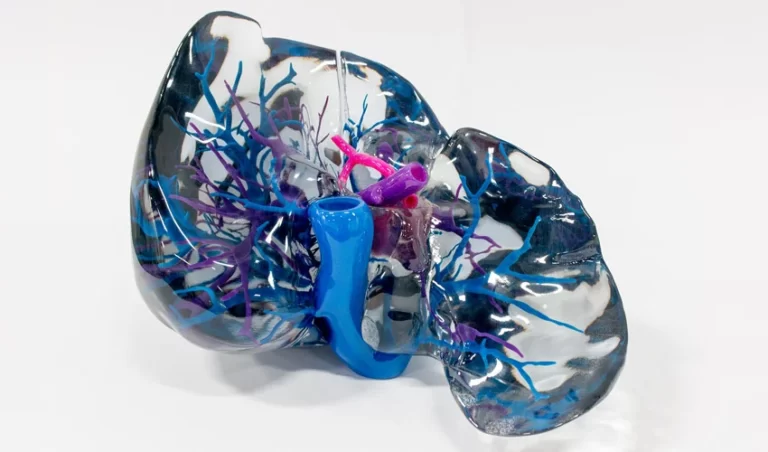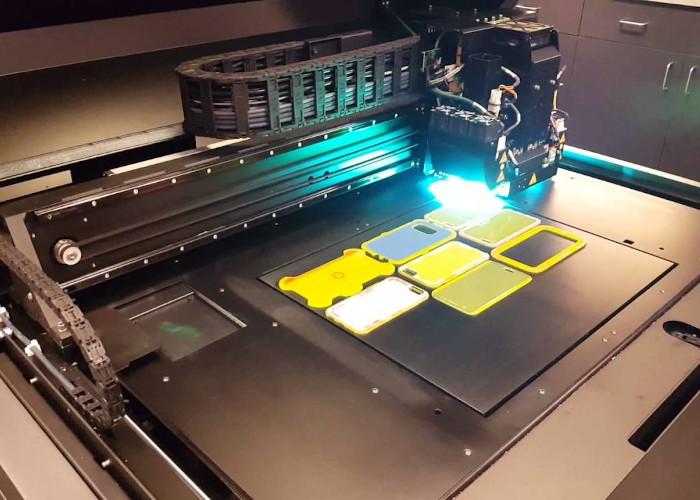Introduction to Material Jetting: Basic Concepts and Terminology
Inkjet technology is used to make parts in the Material Jetting process, an additive manufacturing method. Layer by layer, tiny droplets of material are deposited onto a build platform until the desired object is constructed. With a variety of materials, including ceramics, metals, and polymers, Material Jetting can create highly accurate and detailed parts.
Knowing some fundamental terms and concepts is necessary to comprehend Material Jetting. We refer to the substance that is jetted, whether it is a liquid, solid, or powder, as ‘ink’. The ‘build platform’ is the area on which we construct the component, and we use the ‘nozzle’ as the tool to discharge the ink.” We use the term “accuracy” to describe how closely the printed part follows the planned design, while “resolution” refers to the level of detail we can achieve in print.
The fabrication of complex geometries, multi-material parts, and even the incorporation of electronics are now possible because of substantial advancements in Material Jetting technology. However, the requirement for post-processing and the slow printing rates still constrain the method.
Material Jetting has several uses in various industries, including healthcare, aerospace, and automotive, despite its drawbacks. Additionally, it is a popular option for prototyping and making unique parts.
In conclusion, Material Jetting is a cutting-edge manufacturing technique that enables the production of extremely accurate and intricate parts utilizing various materials. Although the process still has some limitations, it continues to advance with new technologies and techniques and has enormous potential in many industries.
What is Material Jetting?
The Material Jetting process is an additive manufacturing technique that uses inkjet technology to create parts. The process deposits small droplets of material onto a build platform, layer by layer until it forms the desired object. Material Jetting can produce highly detailed and accurate parts with a wide range of materials, including polymers, metals, and ceramics.
The print head moves back and forth over the build platform and jets the material in Material Jetting. The print head releases droplets of material onto the platform, which solidifies almost instantly due to the heat from a UV light source. Once the printer completes a layer, it moves the platform down and repeats the process until it finishes the part.
Material Jetting is a versatile process that can produce complex geometries with high precision and accuracy. It is also capable of printing multiple materials at the same time, making it ideal for creating functional prototypes and intricate parts with fine details.
Material Jetting has numerous applications in various industries, including healthcare, aerospace, and automotive. It is also a popular choice for creating customized products, as the process allows for individualized designs and features.
In summary, Material Jetting is a highly precise and versatile manufacturing process that involves depositing small droplets of material onto a build platform to create parts. With a wide range of materials and the ability to print complex geometries, Material Jetting has significant potential in various industries and is a popular choice for creating customized products.
History of Material Jetting
Compared to other production processes, the Material Jetting process is relatively new. A British engineer named Lord Kelvin created the first inkjet printing equipment in the 1950s. People did not use inkjet technology for non-paper-based applications, such as printing on textiles and ceramics, until the 1980s.
The late 1980s and early 1990s saw the creation of the first material jetting devices by businesses like 3D Systems and Solidscape. Early users primarily employed these devices for prototyping and mold-making, as they had constrained capabilities.
In the 2000s, material jetting technology advanced with the addition of the ability to print with different materials and produce complicated geometries. The technique expanded its possibilities even further by adding metals and ceramics to the list of materials.
Today, a wide range of industries, including healthcare, aerospace, and the auto industry, make extensive use of Material Jetting. It is also a popular option for producing unique designs and bespoke goods.
As technology progresses, people are finding new uses for Material Jetting, and it is becoming easier to use and more affordable. Experts expect Material Jetting to continue playing a crucial role in additive manufacturing for many years due to its great precision and accuracy.
Terminology Used in Material Jetting
| Terminology | Simple Definition |
|---|---|
| Material Jetting | An additive manufacturing technique that uses inkjet technology to create parts by depositing small droplets of material onto a build platform. |
| Ink | The material that is jetted, regardless of whether it is a liquid, solid, or powder. |
| Build Platform | The surface on which the part is built. |
| Nozzle | How closely the printed part matches the intended design? |
| Resolution | The level of detail that can be achieved in a print. |
| Accuracy | The device moves back and forth over the build platform and releases droplets of material onto it. |
| Print Head | The material used to provide support for overhanging or complex features of the printed part. |
| UV Light Source | The source of heat that causes the droplets of material to solidify almost instantly. |
| Layer | A single horizontal slice of the part being printed. |
| Support Material | The material is used to provide support for overhanging or complex features of the printed part. |
| Post-processing | Any additional steps required after the printing process is complete, such as cleaning or finishing the part. |
Comparison of Material Jetting with Other Additive Manufacturing Processes
Material Jetting is one of several additive manufacturing processes. Let’s compare it with three other popular processes: Fused Deposition Modeling (FDM), Stereolithography (SLA), and Selective Laser Melting (SLM).
Manufacturers widely use the FDM process, which extrudes molten plastic through a heated nozzle to create parts layer by layer. It is relatively fast and inexpensive, but the resolution and accuracy are lower than those of Material Jetting.
SLA uses a laser to solidify a liquid resin, layer by layer, to create parts. It has higher resolution and accuracy than FDM, but the material options are more limited. Material Jetting offers similar resolution and accuracy to SLA but has a wider range of material options.
SLM uses a high-powered laser to melt and fuse the metal powder together to create parts. It is a highly precise process and is suitable for creating high-strength parts, but it is typically slower than Material Jetting and has higher costs.
In summary, Material Jetting offers high precision and accuracy, a wide range of material options, and relatively fast printing speeds. It compares favorably to other additive manufacturing processes such as FDM, SLA, and SLM, each of which has its unique advantages and disadvantages. We choose which process to use based on the specific requirements of the part being printed.
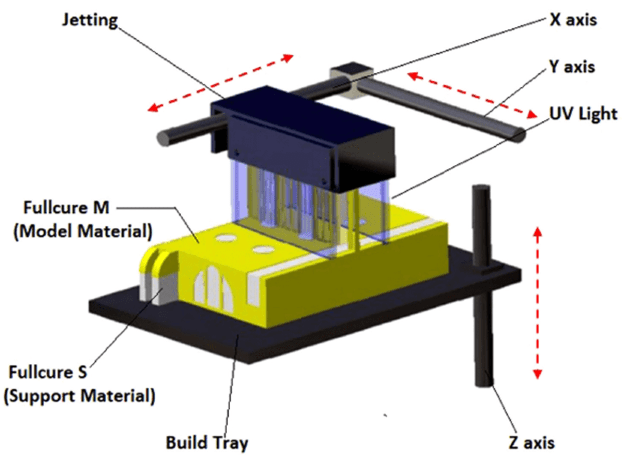
Material Jetting Process: How It Works
Introduction to Material Jetting Process Material Jetting is an additive manufacturing process that uses inkjet technology to create parts. It involves depositing small droplets of material onto a built platform layer by layer. This process can produce highly precise and complex parts with a wide range of material options, making it a popular choice in various industries.
Overview of Material Jetting Process
Material Jetting involves heating the material and then jetting it through a nozzle onto the build platform, layer by layer. The droplets of material are solidified almost instantly using a UV light source. This process can achieve high resolution and accuracy, making it suitable for creating detailed and intricate parts. Material Jetting can also print multiple materials simultaneously, enabling the creation of multi-material parts.
Steps Involved in Material Jetting
To begin Material Jetting, the operator creates a digital 3D model of the part that will be printed. The operator then uses specialized software to slice the model into multiple layers. The operator heats the material and jets it through a nozzle onto the build platform, layer by layer. The droplets of material are solidified using a UV light source. Once the printer completes printing, the operator removes any support material, cleans the part, and performs necessary post-processing.
Types of Material Jetting Processes
There are two main types of Material Jetting processes: continuous and drop-on-demand. Continuous Material Jetting jets the material continuously through the nozzle, whereas Drop-on-Demand jets the material in droplets as needed. Drop-on-demand Material Jetting offers more precise control over the amount of material deposited, making it suitable for creating highly detailed parts. Continuous Material Jetting is faster and more suitable for creating larger parts.
Materials Used in Material Jetting
Materials used in Material Jetting can vary depending on the specific requirements of the part being printed. Common materials include polymers, ceramics, and metals. Some Material Jetting processes can even print multiple materials simultaneously, allowing for the creation of multi-material parts. The wide range of material options makes Material Jetting a versatile process suitable for a range of applications in various industries.
Techniques Used in Material Jetting
The material jetting process is a highly versatile 3D printing technique that allows for the production of complex geometries with high resolution and accuracy. Various techniques employ their own advantages and limitations to achieve these results. Understanding the different techniques used in material jetting is crucial in determining the best method for a particular application.
Inkjet Printing Technique
Material jetting commonly uses inkjet printing techniques, particularly for printing single materials. The inkjet printing process involves depositing small droplets of material onto a substrate using a piezoelectric or thermal printhead. People know this technique for its high resolution and accuracy, but it may not suit printing with multiple materials or producing large structures.
Drop-on-demand Printing Technique
Drop-on-demand printing is another technique used in material jetting. This technique involves selectively depositing material onto a substrate by generating droplets of material only when needed. This method is especially useful for printing with multiple materials or for producing structures with varying properties. However, it may not be as fast as inkjet printing and may require more complex equipment.
Continuous Printing Technique
Continuous printing is a technique used in material jetting that involves depositing a continuous stream of material onto a substrate. This method is useful for printing large structures and for producing parts with high throughput. However, it may not be as precise as other techniques and may require more post-processing.
Multi-material Printing Technique
Material jetting uses the multi-material printing technique to print with multiple materials simultaneously. This method is useful for producing parts with varying properties or for printing complex geometries that require support structures. However, it may be more complex and may require more post-processing.
In conclusion, the techniques used in material jetting each have their own unique advantages and limitations. It is important to carefully consider these factors when deciding on the best method for a particular application. By understanding the differences between inkjet printing, drop-on-demand printing, continuous printing, and multi-material printing, one can choose the best method to achieve the desired results.
Advantages of Material Jetting
The material jetting process has several advantages over other additive manufacturing technologies. One of the major advantages is its ability to produce parts with high resolution and accuracy. The process precisely places tiny droplets of material to create complex shapes and features with a smooth surface finish.
Another advantage is the wide range of materials that can be used in material jetting. The process can work with a variety of materials including polymers, ceramics, metals, and composites, allowing for the production of parts with different properties and characteristics.
Material jetting also enables the printing of complex geometries that may be difficult or impossible to produce with other manufacturing methods. This makes it an ideal choice for creating parts with intricate shapes and internal structures, such as medical implants or aerospace components.
Additionally, material jetting allows for customization and personalization of parts, enabling the production of unique designs tailored to specific applications or customers. This level of customization can lead to better functionality and performance of the final product.
Overall, the material jetting process offers a range of benefits that make it an attractive option for manufacturing high-quality, complex parts with a wide range of materials and customized designs.
Limitations of Material Jetting
Before selecting material jetting for manufacturing, one must consider the limitations of this process. The slow printing speed, limited build volume, high cost of equipment and materials, post-processing requirements, and difficulty in printing large parts are the main drawbacks of material jetting.
The slow printing speed is due to the layer-by-layer deposition process, which can take a long time to complete. The limited build volume is a result of the precision and resolution required for material jetting. The high cost of equipment and materials is due to sophisticated technology and the need for specialized equipment and materials.
Post-processing requirements can also be a limitation of material jetting. Post-processing can be time-consuming, expensive, and require specialized expertise. Furthermore, printing large parts can be a challenge due to the limited build volume and the potential for warping during the printing process.
In conclusion, material jetting has its limitations, including slow printing speed, limited build volume, high cost of equipment and materials, post-processing requirements, and difficulty in printing large parts. However, with careful consideration of these limitations, material jetting can still be a useful additive manufacturing technique for producing high-quality, precise parts.
Best Practices for Material Jetting
Material Jetting is a complex process that requires careful planning and execution. Here are some best practices to follow for successful material jetting:
Design Considerations for Material Jetting
Designing for material jetting requires careful consideration of the part’s geometry, support structures, and overhangs. It is important to minimize the number of support structures required and to design parts with self-supporting geometries wherever possible.
Material Selection and Preparation
Choosing the right material for material jetting is crucial to achieving the desired properties in the final part. Proper preparation of the material, including mixing and degassing, is necessary to ensure consistent performance.
Printer Calibration and Maintenance
Proper calibration and maintenance of the printer are essential for achieving accurate and repeatable results. Regular calibration and maintenance of the printer’s hardware and software can help minimize errors and prevent downtime.
Post-processing Techniques
To achieve the desired surface finish and mechanical properties in the final part, one often needs to perform post-processing. You can use techniques like sanding, polishing, and chemical treatment to improve the surface finish. In addition, you can use heat treatment and annealing to enhance the mechanical properties of the part.
Quality Control and Testing
Quality control is critical in material jetting to ensure that parts meet the required specifications. We can use testing methods such as dimensional analysis, surface analysis, and mechanical testing to verify the quality and performance of the part.
By following these best practices, material jetting can be a reliable and efficient way to produce high-quality parts with complex geometries and unique features.
Future of Material Jetting
The material jetting process has a bright future as new technologies enable it to grow. The creation of novel materials and the capacity to print with numerous materials at once are two of the most important developments in material jetting. Manufacturers are increasingly linking additive manufacturing systems with traditional production techniques like CNC machining and injection molding to increase design freedom and improve performance.
Emerging Technologies in Material Jetting
New advancements in print speed and resolution, the addition of new materials with superior properties, and the capacity to print working electronic devices are some examples of emerging technologies in material jetting. These technological developments may significantly impact the fields of aerospace engineering, electronics, and biomedical engineering.
Integration of Material Jetting with Other Manufacturing Processes
Numerous advantages may result from the incorporation of material jetting with other manufacturing procedures. For instance, combining material jetting with CNC machining can result in the production of components with high surface quality and intricate geometries. The time and expense needed for tooling can be greatly decreased by combining material jetting with injection molding.
Potential Applications and Markets
The markets and potential applications for material jetting are numerous and diverse. In industries including aircraft, medical devices, and consumer goods, there are new prospects made possible by the capacity to fabricate complex parts with great accuracy and resolution. Additionally expanding is the use of material jetting in the electronics sector, especially for the manufacture of printed circuit boards and other electronic parts. It is anticipated that material jetting will be used increasingly frequently across a variety of industries as technology advances.
Conclusion: Is Material Jetting Right for Your Project?
The material jetting process is a powerful tool that can produce high-quality, intricate parts with a wide range of materials. In this section, we will summarize the key points of this technology and provide an overview of the factors to consider when choosing a manufacturing process.
Summary of Key Points
The key advantages of material jetting include its high resolution, accuracy, ability to print complex geometries and wide range of materials. However, there are also limitations to consider, such as slow printing speed, limited build volume, high cost of equipment and materials, post-processing requirements, and difficulty in printing large parts.
Pros and Cons of Material Jetting
When considering whether material jetting is right for your project, it’s important to weigh these pros and cons against your specific needs and requirements. Factors to consider when choosing a manufacturing process include the complexity of the design, required resolution and accuracy, volume of production, type of material needed, and available budget.
Factors to Consider When Choosing a Manufacturing Process
In conclusion, material jetting is a valuable tool for creating high-quality, intricate parts with a wide range of materials. However, its limitations must be carefully considered when deciding whether to use this technology for a particular project. By taking into account the key factors that impact the decision-making process, you can determine whether material jetting is the right choice for your specific needs.
How to integrate material jetting with other manufacturing processes?
- Identify the manufacturing process to be integrated
Determine which manufacturing process you want to integrate with material jetting. This will depend on the specific application and the desired outcome.
- Evaluate compatibility
Evaluate the compatibility of the two manufacturing processes. Determine whether they can be integrated seamlessly or whether modifications need to be made.
- Determine integration method
Decide on the integration method that will be used. This could be as simple as adding material jetting as a step in the existing manufacturing process or as complex as developing a custom integration process.
- Design integration system
Design the integration system for the two processes. This will involve developing the necessary hardware, software, and mechanical components needed to integrate the two processes.
- Test and refine
Test the integrated system and refine it as needed. This will involve a series of tests to ensure that the integrated system works as intended and that the output meets the desired specifications.
- Implement
Once the integrated system has been tested and refined, it can be implemented into the manufacturing process. This may involve training personnel on how to use the integrated system and modifying any existing protocols or procedures as needed.
- Monitor and optimize
Monitor the integrated system to ensure that it continues to operate as intended. Identify any areas for optimization and make necessary adjustments to improve efficiency and output quality.
FAQs
Material jetting is a 3D printing technology that uses inkjet printheads to deposit and solidify materials layer by layer to create a 3D object.
The advantages of material jetting include high resolution, high accuracy, a wide range of materials, the ability to print complex geometries, and customization and personalization.
The limitations of material jetting include slow printing speed, limited build volume, high cost of equipment and materials, post-processing requirements, and difficulty in printing large parts.
When designing for material jetting, it’s important to consider factors such as material properties, printer resolution and accuracy, and support structures. It’s also recommended to use a CAD software that can export files in a compatible format.
Material selection for material jetting depends on factors such as desired properties, compatibility with the printer, and cost. Materials also need to be prepared properly, such as being mixed or loaded into cartridges before use.
Post-processing techniques for material jetting can include support removal, surface finishing, and curing. These techniques can help improve the final appearance and functionality of the printed object.
Yes, material jetting can be integrated with other manufacturing processes such as CNC machining, injection molding, and casting. This can allow for more complex and customized parts to be produced.

